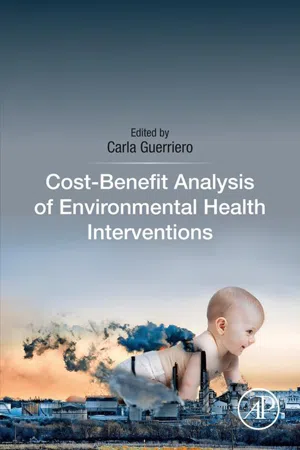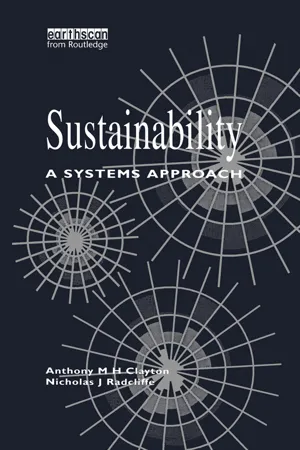Discounting
Discounting is a financial concept used to calculate the present value of future cash flows. It involves adjusting the value of future payments to reflect the time value of money, as money received sooner is worth more than the same amount received later. Discounting is commonly used in investment appraisal, bond pricing, and determining the value of long-term projects.
7 Key excerpts on "Discounting"
- eBook - ePub
- Craig Langston, Craig Langston(Authors)
- 2008(Publication Date)
- Routledge(Publisher)
...There is great institutional convenience in the uniform adoption of a standard form of appraisal; it seems to offer consistency, even if only in the form of consistent error. Compromises have been sought that modify Discounting incrementally so that its long-term effects are less severe. But most agree that Discounting is so firmly entrenched that it cannot readily be displaced, even if such action was considered appropriate(Price, 1993). 20.2 The rationale for Discounting Discounting is defined as the means by which equivalent value is determined. Costs and benefits that arise in different time periods must be brought to a common base so that a proper comparison can be made. This comparison concerns not just the timing of cash inflows and outflows for a given project, but the relationship of cash flows across projects. Therefore Discounting is a decision-aiding technique that enables alternative investments to be evaluated and ranked. Discounting processes result in the calculation of ‘equivalent’ values that are useful in comparing alternative solutions involving cash flows that span over more than one year. Discounted value is an ‘abstract’ measure that negates the need to explicitly consider finance costs while simultaneously allowing for the timing of cash flows. Ashworth (1999) warns that we need to remind ourselves consistently that we are comparing the worth of alternative systems and not their costs. Robinson (1986, pp. 18-19) confirms that in the context of life-costs: The problem areas generally arise as such because potential users of the technique are misled by the idea that the life cycle cost outcome must stand by itself in absolute terms. A little thought will lead to the conclusion that this is not possible. The life cycle cost outcome is only useful as a comparative figure for the purpose of ranking one solution over another...
- eBook - ePub
Hazardous Substances and Human Health
Exposure, Impact and External Cost Assessment at the European Scale
- Till M Bachmann(Author)
- 2006(Publication Date)
- Elsevier Science(Publisher)
...For instance, 1 € next year is not worth the same as 1 € now because 1 € now can be invested at a certain interest rate r i > 0 to become 1 ⋅ (1 + r i) € next year. Consequently, 1 € next year is worth 1/(1+ r i) € now. Discounting, thus, is a weighting scheme to convert future costs or benefits into their present monetary values. One has to note that Discounting is always conducted when valuing costs at different points in time because ‘no Discounting’ simply means to use a discount rate of zero with a resulting discount factor of one. Thus, Discounting is always performed when dealing with intertemporal matters, either explicitly or implicitly. Discount rates exist for individuals as well as for societies. The discount rate for individuals is generally based on the Individual Time Preference (ITP) whereas for societies different approaches exist like the Social Time Preference (STP) measuring the reduction of the consumption benefit over time from a consumer perspective or the Opportunity Cost of Capital (OCC) taking the return rate of the best available alternative to an investment from a producer perspective (e.g., Rennings, 1997). Both discount rates should be identical in a perfect market. This is not the case for instance owing to the incompleteness or failures of markets and the fact that an individual experiences an increase of income due to becoming more qualified in the course of a life whereas a society does not ‘grow wisdom’ to the same extent. 21 Generally the social discount rate is smaller than that of an individual...
- Carla Guerriero(Author)
- 2019(Publication Date)
- Academic Press(Publisher)
...The appraisal of intertemporal preferences matters because economic evaluation passes through the lenses of preferences for being more reliable and for predicting the behavior of the economic agents. Understanding in detail the structure of the preferences is central to the use of scarce resources. Choices are affected by the time in which an event is expected to occur: generally, receiving goods or services today is worth more than receiving them in the future. Discounting implies measuring the intertemporal preferences, and it allows the analyst to compare costs and benefits that occur at different times. CBA Discounting is an essential step when choosing between different programs and assessing their attractiveness: the project or the policy with the higher present value is the one that, following the CBA rule, should be chosen. There exist different Discounting methods for providing a realistic weight to the future, and the selected approach (e.g., zero Discounting vs constant discount rate) can significantly affect the CBA results. Depending on the model adopted, the main issues associated with Discounting are related to time inconsistency and an excessive care of the needs of the current generation against the interests and the welfare of future generations. The analyses on the relevance and the weight of those problems are discussed in this chapter together with the explanation of the different Discounting models. The following section classifies the types of discount rates based on the perspective of the agents considered, individuals, or society. The third section illustrates Discounting methods together with the Collard alternative approach. The fourth section focuses on the main models of intergenerational Discounting used in the literature. Finally, the last section of the chapter describes the effects of uncertainty as an assumption of the models and the issue of intergenerational equity...
- eBook - ePub
Sustainability
A Systems Approach
- Tony Clayton, Nicholas Radcliffe(Authors)
- 2018(Publication Date)
- Routledge(Publisher)
...The general principle of Discounting is that future revenues are discounted because they are assumed to be less valuable than current revenues. This, of course, tends to favour investments that offer greater short-term returns and militate against long-term investment. One of the most important reasons for Discounting is the existence of net productivity and interest rates. Capital invested today, at interest, will earn a profit. If the capital does not become available until tomorrow, then today’s potential profit is lost. This is why high interest rates generally covary with high discount rates. Discounting is also used for various other reasons. One factor is time preference. Under prevailing circumstances, people generally prefer to have returns on investment sooner rather than later. This is for a number of reasons: ❑ People are impatient. ❑ A given sum of money generally makes more of a difference to someone who is poor than someone who is rich. A trivial sum to a billionaire might seem like great wealth to someone on welfare. If an individual or a society is becoming or expects to become wealthier, therefore, it is reasonable to suppose that a given sum will make less of a difference to them in the future than it would today. Thus people prefer to have their returns sooner rather than later, as they anticipate that the later income will be worth less to them. This is termed the diminishing marginal utility of income. ❑ There is a risk to the investor that he or she might die before a longterm investment matures. Clearly, there are a number of factors which make time preference entirely rational behaviour, and which tend to shorten the acceptable duration of an investment period. For example, conditions of extreme poverty oblige the sacrifice of long-term interests in order to secure short-term survival...
- eBook - ePub
- Robert Irons(Author)
- 2019(Publication Date)
- Routledge(Publisher)
...How much greater than one it is will depend upon the interest rate used and the number of periods in the future required. This will be shown in greater detail in the section “Future Value and Compounding.” Discounting, or calculating present values, results in cash flows growing smaller the further back in time the value is calculated. For this reason, the multiplier used to calculate the present value of a single cash flow will be less than one. How much less than one it is depends upon the interest rate used and the number of periods back in time required. This will be made clear in the section “Present Value and Discounting.” Figure 2.1 The Future Value of $1,000 Invested to Earn 5% APR Over One Year Note that Discounting involves the removal of value over time. The value removed represents the return that would be earned by the money if it were available to be invested today. In later chapters, you will see that: The present value of a bond is calculated by removing the required yield on the bond over the life of the bond; The present value of a stock is calculated by removing the required return on the stock; The present value of a production project is calculated by removing the cost of money to all investors (bond holders and shareholders); and The present value of the firm is calculated by removing the cost of money to all investors (bond holders and shareholders). Thus, when valuing an asset, the purpose of Discounting is to account for the return the firm owes to its investors for being able to use their money. In this chapter, we will be valuing future cash flows, and in this case the discount rate represents the opportunity cost of the investment—the yield on the next best investment available. A tool that is helpful in time value calculations, particularly for complex time value problems, is the time line...
- eBook - ePub
- Paul R. Portney, John P. Weyant(Authors)
- 2013(Publication Date)
- Routledge(Publisher)
...15 Discounting and Public Policies That Affect the Distant Future William D. Nordhaus W ILLIAM D. N ORDHAUS is A. Whitney Griswold Professor of Economics at Yale University. A discount rate is a price used to compare future and present goods. This paper addresses the following issue: When the implications of conventional benefit-cost tests are ethically unacceptable, how might they be modified? I examine this question by employing different rules in an empirical model of global warming. The major conclusion is that ad hoc manipulation of discount rates is a very poor substitute for policies that focus directly on the ultimate objective. Moreover, within the class of policies that distort discount rates, targeted distortions in the specific sectors are less harmful than distortions of discount rates in the entire economy. The best approach will generally be to identify the long-term objective and to directly override market decisions or conventional benefit-cost tests to achieve the ultimate goals. Focusing on ultimate objectives shows trade-offs explicitly, makes the cost of violating benefit-cost rules transparent, and allows public decisionmakers to weigh options explicitly rather than allowing technicians to hide the choices in abstruse arguments. Introduction Important issues that affect the distant future pose deep difficulties for public policy. Some obstacles are political, such as getting elected officials with two-year electoral cycles to focus on problems beyond their election horizons. Other issues are complicated by intractable uncertainties about what the world will look like in a century or more. But at a deeper level, it is apparent that our conventional tools of economic analysis are poorly designed to deal with long-term investments. Like distant objects reduced by the perspective of space, distant economic events are diminished by Discounting to such tiny magnitudes that they become negligible in the standard economic benefit-cost calculus...
- eBook - ePub
The Capital Budgeting Decision
Economic Analysis of Investment Projects
- Harold Bierman, Jr., Seymour Smidt(Authors)
- 2012(Publication Date)
- Routledge(Publisher)
...Chapter 2 The Time Value of Money The frenetic buying of Internet stocks is going to make the tulip buyers of the 17th century look like value players. Rick Berry, director of equity research at J. P. Turner & Company in Atlanta. The New York Times, January 9, 1999 Compound interest is one of the wonders of this world. It is the basis of the present value calculations. The Safra Bank issued bonds that mature in 1,000 years. The present value of $1,000,000,000 of principal payments of this bond at a 0.08 annual interest rate is much less than $0.01. Compound interest is very powerful. A future sum may have a very small present value. A very small present amount might grow to a large sum in the future. To better understand the time value of money, we shall first assume that both the discount rate and the dollar amounts are known with certainty. These assumptions enable us to establish basic mathematical relationships and to compute exact relationships between future sums and their present values. Time Discounting One of the basic concepts of business economics and managerial decision-making is that the present value of an amount of money is a function of the time of receipt or disbursement of the cash. A dollar received today is more valuable than a dollar to be received in some future time period. The only requirement for this concept to be valid is that there be a positive rate of interest at which funds can be invested or borrowed. The time value of money affects a wide range of business decisions, and how to incorporate time value considerations systematically into a decision is essential to an understanding of finance. The objective of this chapter is to develop skills in finding the present equivalent of a future amount or future amounts and the future equivalent of a present amount. Symbols Used X Cash flow. If X is greater than zero there is a cash inflow. If X is less than zero, there is a cash outflow. t Time index...






